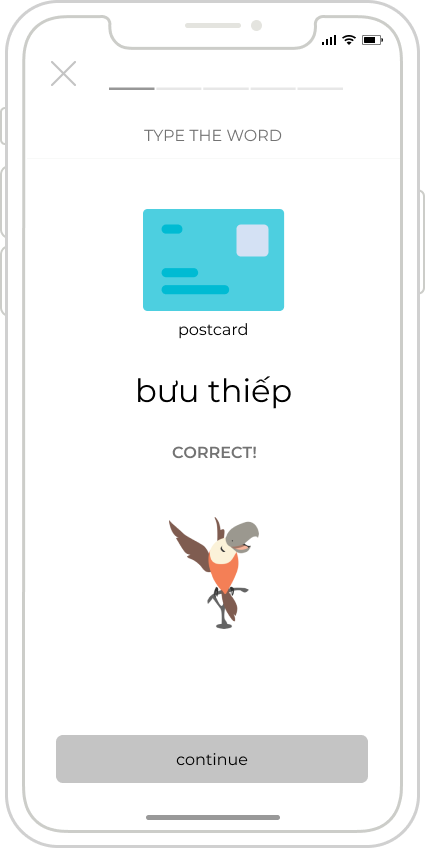

We use mnemonic devices to help us remember abstract and unfamiliar information. How might we create a mobile learning experience featuring story-based memorization?
Learn with the prototype >>


We use mnemonic devices to help us remember abstract and unfamiliar information. How might we create a mobile learning experience featuring story-based memorization?
Learn with the prototype >>Polyhooks is a tiny company building a learning app with a unique way of teaching foreign language vocabulary. It's based on the idea that you can quickly learn a bunch of words when they’re tied to memorable stories.
My background in education and the fact that I was living in Brazil, desperately trying to learn Portuguese made this project particularly compelling for me.
This case study explains how I designed the app’s core word-learning experience.
Polyhooks is not the next Duolingo. It’s mainly focused on vocabulary building. The program uses a short story called a “memory hook” to help learners remember unfamiliar words.
But how would this work as an app? Instead of a one-to-one word-definition relationship, learning each word involves four relational pieces: word, definition, story, and image.
How might we design a simple user experience for using a mnemonic device to remember new vocabulary?

Even though Polyhooks didn’t look like anything on the market, there was a lot to be learned from analyzing the apps out there.
I spent a lot of time looking at language apps 😅.
After many hours and lots of progress in my personal Portuguese learning, I developed a set of rules:

I worked with the founder to understand the Polyhooks word-learning sequence. With the Polyhooks method, each word is taught in four steps:


After reviewing my sketches with the founder and developer, I designed a wireframe prototype so that we could test the designs.








I created a working prototype and set out to answer three main questions:
I tested the wireframes with 5 people who had never studied Vietnamese, but who had studied a language before.



I created hi-fi designs and re-tested with new users. I was looking for two key improvements:
The short answer? YES!
100% of users achieved the “aha” moment on their first word, most of them on the summary screen in step 3.
Adding labels eliminated user strain to remember each variable, and by the third word users moved quickly and confidently through the flow. As a bonus, 100% of users could remember the Vietnamese word for postcard after a 15 minute delay.


UX copy is everything. Especially when introducing a new concept, clear, direct copy makes a huge difference.
Users arrive with assumptions. Almost all user testers assumed this would be like Duolingo. It took these users extra energy to pivot to understand a new model. How might we make it easier for new users to understand Polyhooks?